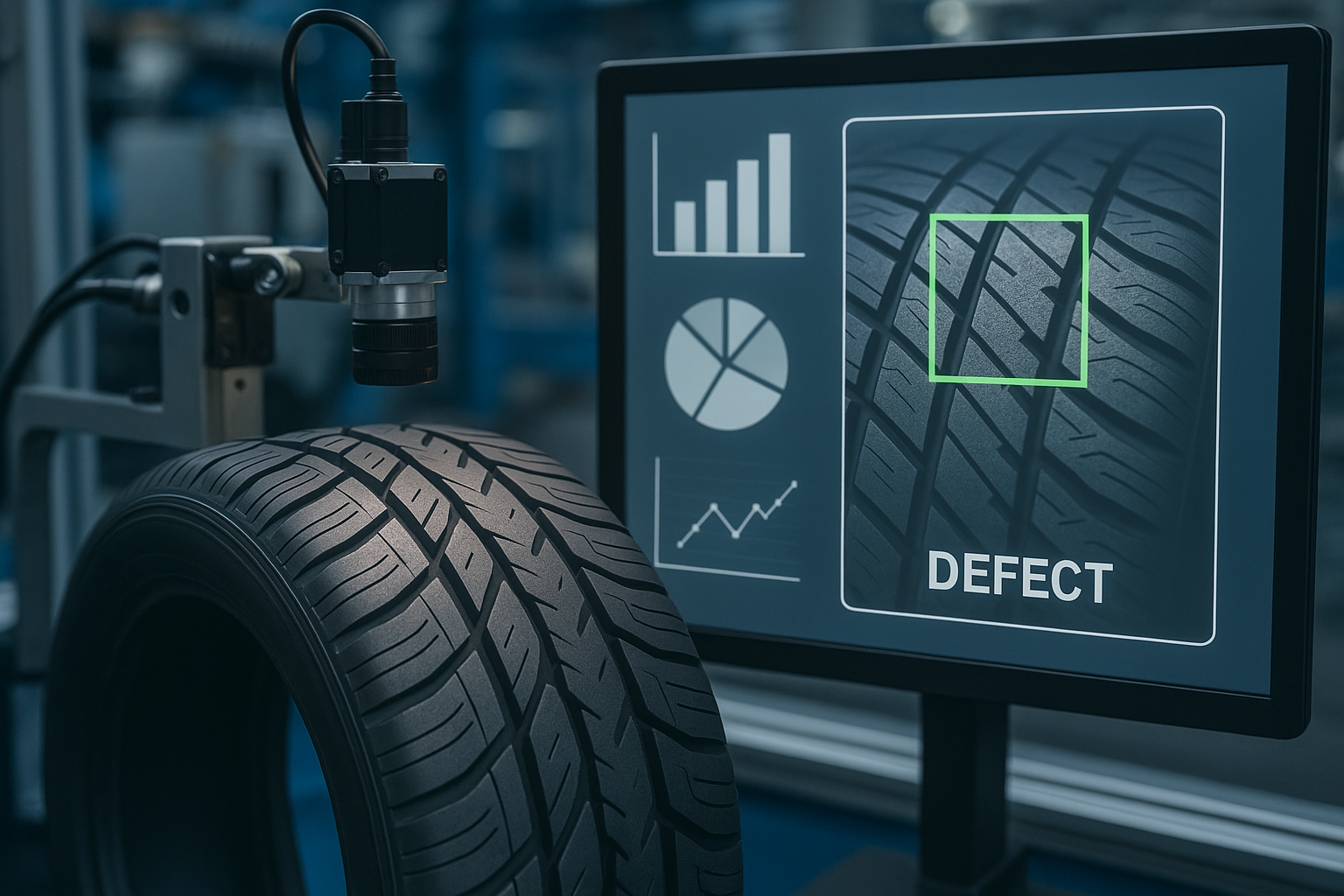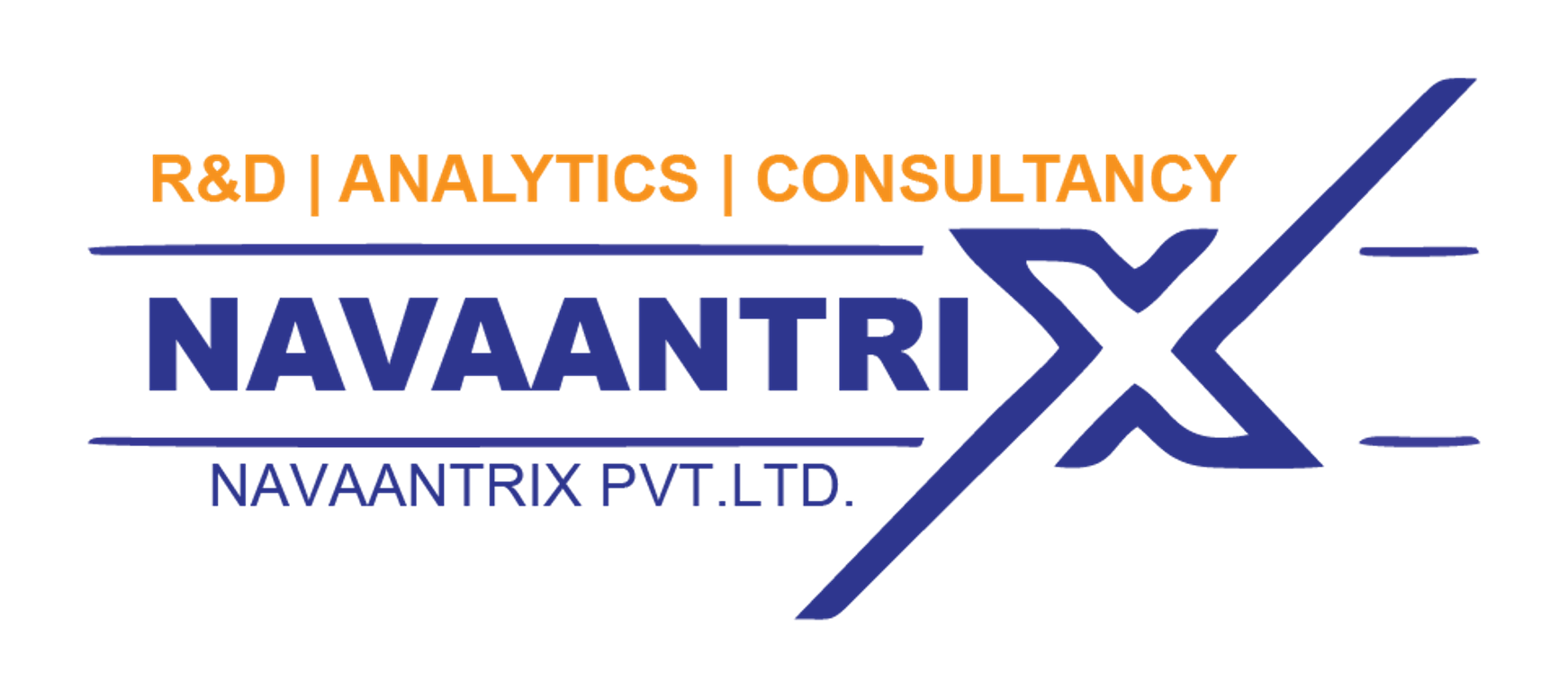Optimizing Rubber Tread Production: The Role of Machine Vision and Data Analytics
Posted on April 21, 2025

Introduction
The rubber tread industry has embraced machine vision systems coupled with advanced data analytics to revolutionize quality assurance processes. These technologies enable manufacturers to detect defects, ensure consistent production, and maintain high-quality standards throughout the manufacturing lifecycle.
Machine Vision Technologies in Rubber Tread Industry
The rubber tread industry has evolved from using basic single-point measurement systems to more sophisticated line laser technologies that significantly enhance inspection capabilities. These modern systems allow manufacturers to complete inspections in a single revolution of the tire, providing better resolution and much higher density of information compared to traditional methods. The technology is particularly valuable because tire manufacturers now want to inspect not just the finished product but all components throughout the production process.
3D sensors have emerged as the preferred solution for rubber tread inspection due to their ability to handle the unique challenges of the industry. Unlike 2D sensors that struggle with the "black-on-black" contrast of rubber materials, 3D sensors can effectively scan low-contrast, dark materials with complex geometry at high speeds. These sensors generate detailed, accurate cross-sectional shape data regardless of the challenging optical properties of rubber materials.
Data Collection and Analytics Applications
Comprehensive Data Collection
Machine vision systems in the rubber tread industry collect various types of high-density, high-speed data that enable thorough quality assurance:
- Complete 3D point cloud maps of sidewalls and treads for bulge and dent detection
- Measurements of radial and lateral runout in final tire inspections
- Detailed cross-sectional shape data for feature inspection regardless of the black-on-black nature of rubber materials
- Tire tread depth measurements using arrays of laser light sources and multiple image sensors
Quality Defect Detection
Data analytics processes the collected visual information to identify various defects that could compromise tire quality and safety:
- Structural weaknesses like bulges (stemming from gaps in layered rubber sheets) and depressions (areas of extra hardness and density on sidewalls)
- Sidewall cracks, rim line cracks, sidewall blisters, and other anomalies that affect performance and safety
- Incorrect component placements, missing parts, or assembly errors that could lead to product failure
Deep learning algorithms, particularly Convolutional Neural Networks (CNNs), analyse images or videos from production lines to identify defects that might be missed by traditional inspection methods. These systems can be trained on extensive datasets of both defective and non-defective products to improve detection accuracy over time.
Applications Throughout the Manufacturing Process
Machine vision combined with data analytics supports quality assurance at multiple stages of the rubber tread manufacturing process:
- Extrusion Monitoring: Providing dimensional gaging and feature verification for extrusion patterns with multiple small grooves
- Assembly Verification: Ensuring correct strip guidance, layer control, and splice control during the tire building process
- Final Inspection: Creating complete 3D maps of the finished tire to detect any defects before products reach consumers
High-resolution, high-density data is essential for these applications, especially for measuring small features like grooves in extrusions. Profiling speed requirements must match the target traveling speed to quickly identify localized geometry or position variations along the rubber web.
Analytical Techniques and Methodologies
Several specialized analytical approaches are employed to process the visual data from rubber tread inspections:
- Structured Lighting: This technique uses laser line displacement to indicate where cracks are located in otherwise difficult-to-distinguish black surfaces
- Low-Angle Lighting: Utilizes shadows to identify cracks in black rubber surfaces
- Optimized Multi-Scale Bilateral Filtering: Enhances detailed information in damaged areas to improve detection of surface anomalies
- Automated Groove Identification: Essential for accurate measurement of tire tread depth, using algorithms to distinguish between the tire's outermost surface and groove bottoms
Benefits and Advantages
Implementing data analytics with machine vision systems provides numerous benefits for rubber tread quality assurance:
- Early Defect Detection: Identifying issues early in the production process reduces waste and ensures only high-quality products reach consumers
- Increased Efficiency: Line laser systems allow inspection in a single revolution, significantly improving throughput compared to multiple-pass inspections
- Automated Alerts: Systems can trigger interventions before defective products, malfunctioning equipment, or foreign objects slow or stall production
- Consistent Standards: Machine vision provides more reliable and consistent inspection than human visual inspection, maintaining uniform quality standards
Challenges and Solutions
The rubber tread industry presents unique challenges for machine vision and data analytics:
- Low Contrast Materials: The flat black surface of rubber makes defect detection particularly difficult since cracks appear as black-on-black
- Complex Geometry: Tires have intricate three-dimensional shapes that require sophisticated measurement approaches
- High-Speed Requirements: Production speeds demand rapid data processing and analysis capabilities
Modern 3D smart sensors overcome these challenges by using megapixel imager-based functionality to generate detailed shape data regardless of the material's optical properties. These systems deliver both the high speed and high density of data required to meet manufacturers' quality specifications.
By combining advanced machine vision technologies with sophisticated data analytics, the rubber tread industry has dramatically improved quality assurance processes, ensuring safer, more reliable products while optimizing manufacturing efficiency.
At Navaantrix, we have developed Data Analytics and Visualisation platform. This platform can seamlessly connect with advanced machine visions systems. This integration helps the manufacturers to leverage the power of analytics along with the machine vision technologies to provide better reliable output.
